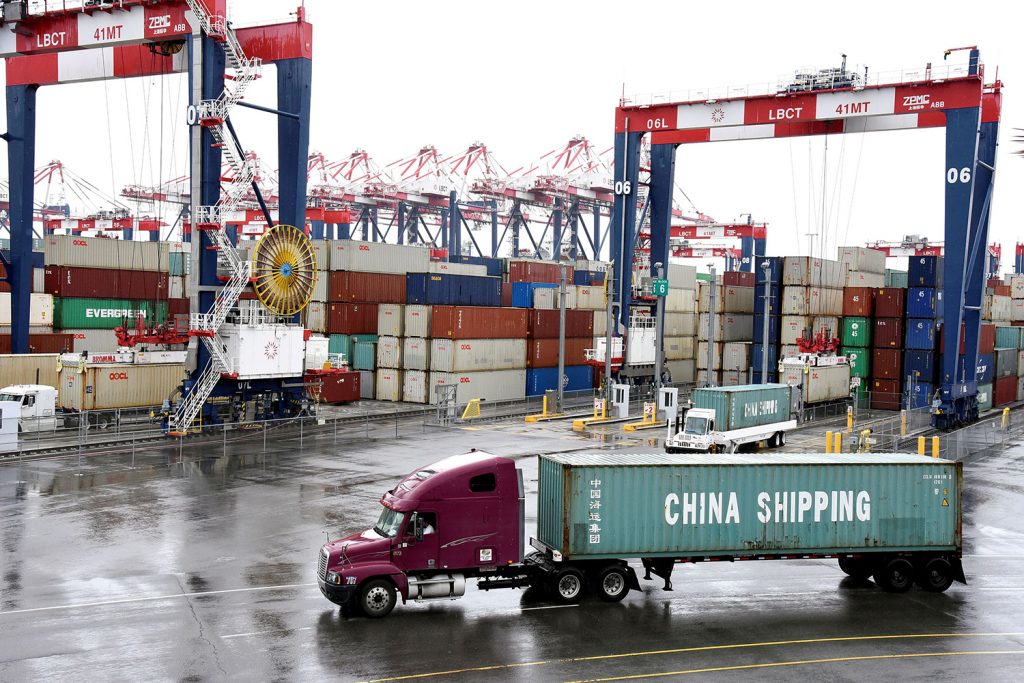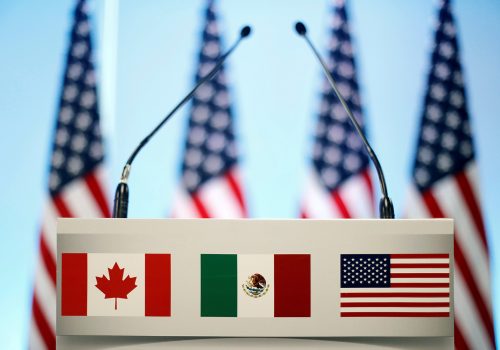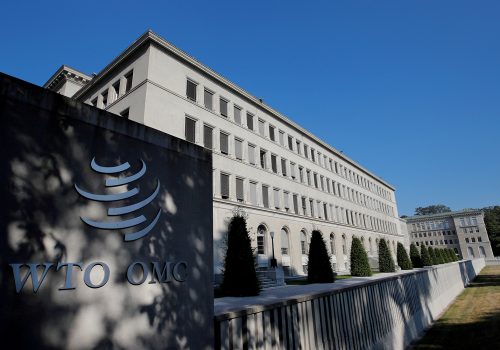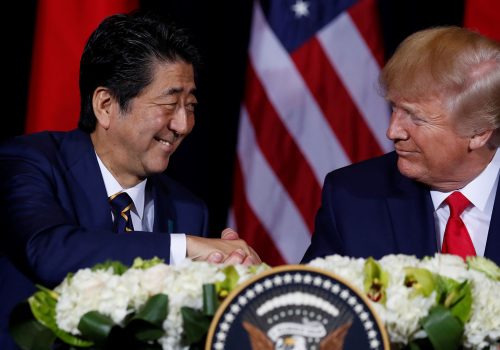The just announced “phase one” trade agreement between the United States and China marks a milestone in the eighteen-month US-China trade war. The agreement, still undergoing legal proofing before being signed, reportedly by US Trade Representative Robert Lighthizer and China’s Vice Premier Liu He in early January, basically has the United States canceling the 15 percent tariff—scheduled to be imposed on December 15—on $160 billion of Chinese (mainly consumer) goods in so-called List 4B and halving the 15 percent tariff on $120 billion on List 4A goods, while maintaining the 25 percent tariff on the $250 billion of Lists 1, 2 and 3 goods. In exchange, China has agreed not to raise tariffs on US cars and other goods also scheduled for December 15, to purchase more US goods and services including agricultural goods, to tighten legal protection of intellectual property rights, to promise not to force transfer of technology through joint ventures, to open market access especially for financial services, and to deal with US complaints about currency manipulation.
While Washington has referred specifically to China’s commitment to purchase $200 billion of goods and services in the next two years, including $40-50 billion of agricultural goods each year (viewed as very ambitious targets), China has emphasized its agreement to purchase more goods including agricultural and advanced goods from the United States and elsewhere “under WTO rules and according to market conditions.” In addition, the earlier US demands for an “enforcement mechanism with rights of the United States to unilaterally impose penalty” has been replaced with a “bilateral assessment and adjudication by a US-China dispute settlement working group.” These nuances may just be cosmetics designed for domestic consumption, but they could also be the seeds of future disagreement in interpretations of the deal.
The fundamental problems of dealing with China’s industrial policies in a state-led economy and subsidies to state-owned enterprises, leading to an increasingly uneven playing field, are left for future (“phase two”) negotiations. Overall, the “phase one” deal represents a truce—welcome as it is—in the trade war but nowhere near a solution to the main challenges China poses to the United States and the world trading system more generally.
Taking stock
To discern the future course of events, it is important to take stock of the impacts of the trade war so far. World trade has recently slowed to a standstill amidst heightened uncertainty, contributing to a slowdown in the world economy. In particular, according to the International Monetary Fund, the United States and China each has lost about 0.5 percentage points of gross domestic product (GDP) growth in 2019 and will slow further in 2020.
More importantly, no progress has been made on the two important goals of US President Donald J. Trump. The US trade deficit with China has decreased substantially to $294 billion in the first ten months of 2019 from $345 billion in the comparable 2018 period, but the US total trade deficit has hardly changed, standing at $716 billion for the same 2019 period as the United States imports more from other countries. By contrast, while exports to the United States have been cut by about 13 percent, China has increased sales to Europe, ASEAN, and many emerging market countries, raising its overall trade surplus to $378 billion in the first eleven months of this year, compared to $294 billion in the comparable period in 2018. As such, contrary to popular perception, net export has been a positive contributor to China’s GDP growth. China’s slowdown has been domestically driven; mainly resulting from official desires to moderate the growth of total social financing—to 10.7% year over year in November 2019 compared to 13.5% earlier in the year (and 20-25 percent in 2015-17)—to guard against risks of a financial crisis.
Regarding the goal of moving manufacturing jobs back to the United States, the needle hasn’t moved. While non-farm payrolls increased by more than 6 million since 2017, the share of manufacturing jobs in total civilian employment currently stands at 8.1%, exactly the same as when President Trump was inaugurated. Some manufacturing activity and jobs have indeed moved from China, but to low-cost countries like Vietnam and not back to the United States.
In terms of restricting the access of China’s companies to sensitive US technologies, the Department of Commerce has put about 200 of those companies on the Entity List and the Committee on Foreign Investment in the United States has tightened its scrutiny of Chinese inward investments. While it is early to see any obvious effects, it is fair to say that China will do its utmost to reduce its dependence on the United States in critical technologies—an effort if successful could lead to a bifurcation of technological systems and standards to the disadvantages of the global economy.
In the particular case of Huawei, after being put on the Entity List in May 2019 (US companies have been granted temporary licenses to continue business though), it experienced some disruptions and uncertainties. However, its shipment of smartphones has recovered strongly with annual growth of 29 percent in the third quarter (compared to a 11 percent growth by its main competitor Samsung). At these rates, Huawei is expecting to overtake Samsung as the largest manufacturer of smart phones sometime next year. Beyond that, it is still too early to see if Huawei can successfully develop domestic alternatives to US critical products—if completely inaccessible —such as the Android operating system, processor chips, and applications to remain competitive in smart phone markets outside China—where it enjoys a 42 percent market share, expected to exceed 50 percent next year.
As for the rolling out of 5G technology, there have been only a few countries that have officially signed up to the US campaign to exclude Huawei in building out their 5G infrastructures on national security grounds. According to the company, Huawei has about sixty-five contracts worldwide to build 5G infrastructure, half of which are in Europe. Huawei’s 5G global market share rose a bit from 28 percent in Quarter One 2019 to 29 percent in Quarter Three 2019, compared with 16 percent for number two Nokia.
What now?
The experiences of the past three years—especially about the efficacy of tariffs in changing China’s behavior—could provide a basis for a sobering debate about the nature of the problem and the appropriate ways to deal with it. Essentially, the challenge is how to engineer a level playing field for countries with systemic differences to participate fairly in global trade. In the current environment of polarization and partisanship, however, this debate is unlikely to be fruitful.
Instead, much will depend on the course and outcome of the 2020 US Presidential election. Already, with announcements of the “phase one” deal, Trump may feel less pressure to do much else vis-a-vis China, giving rise to speculations of “phase one and done” for the next year. If reelected, he may feel emboldened to continue using tariffs and additional tools such as restricting US portfolio investment in Chinese companies to press for meaningful changes in China’s state-owned enterprise model—changes which China is very unlikely to agree to. Indeed, Vice Premier Liu He has recently emphasized that China will make its state economy “stronger, better, and bigger.”
If the Democrats retake the White House, there could be an effort to rebuild the traditional alliances with Europe, Japan, and others to develop a broadly-based approach to deal with China—and thus much less emphasis on the unilateral use of tariffs. The contention with China, however, will likely deepen, not lessen, moving more into the security, human rights, and ideological arenas, well beyond Trump’s mercurially transactional approach to trade disputes.
In short, enjoy “phase one” while it lasts and prepare for a bumpier ride in US-China relationship in the foreseeable future.
Hung Tran is a nonresident senior fellow at the Atlantic Council, and former executive managing director at the Institute of International Finance.
Further reading:
Image: Containers are seen at the port in San Pedro, California, U.S., March 22, 2018. REUTERS/Bob Riha, Jr./File Photo



